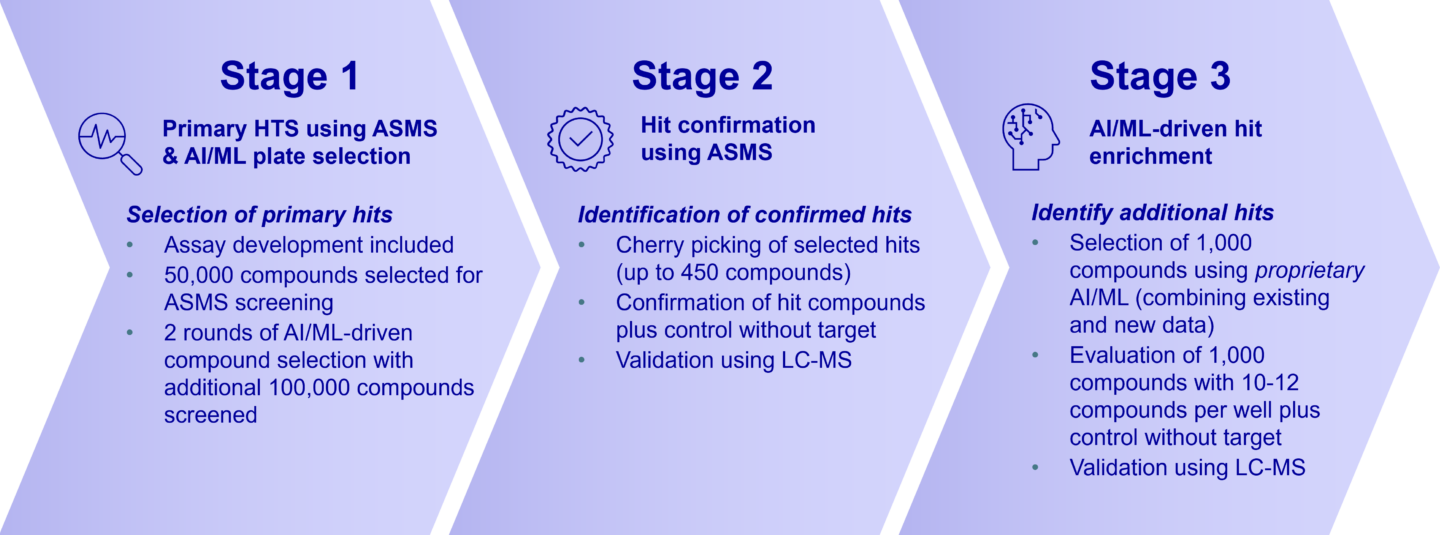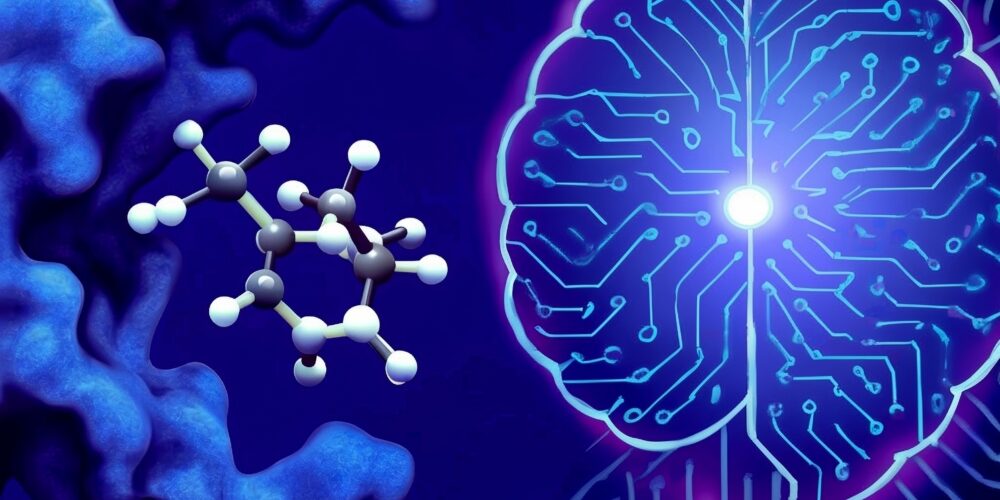Enricture accelerates early-stage drug discovery by combining Affinity Selection–Mass Spectrometry (ASMS) with AI/ML-powered hit enrichment. This innovative approach delivers high-quality hits faster and more cost-effectively than traditional high-throughput screening (HTS).
Why Choose Enricture?
- Smarter Spend
Over 50% lower investment than traditional HTS, with reduced risk. - Faster Results
Cut timelines by over 30% — from 3 months to just 2. - Intelligent Screening
Use of proprietary AI/ML algorithms for hit enrichment. - Built-in Expertise
Access to a cross-functional team including Medicinal Chemistry and Computational Chemistry specialists. - High-Quality Library
Screen from a highly curated 400k lead-like compound library with no access fee applied.
Efficient 3-Stage Process
Enricture uses a streamlined 3-stage workflow:
- Primary HTS using ASMS & AI/ML-Based Plate Selection
- Hit Confirmation
- AI/ML-Driven Hit Enrichment

ASMS Technology Overview
Key Features:
- High-throughput binding assay: up to 50,000 compounds per run (n=2)
- Target agnostic: proteins and nucleic acids (orphan target)
- Native conformation: solution-based label-free technology
- Binding site agnostic: tests all possible binding sites at once
- Accurate: binder identification based on accurate MW limiting false positives

Overview of affinity selection mass spectrometry (ASMS)
The Power of AI/ML in Hit Identification
- Integration of existing screening data and chemical structural information
- Efficient exploration of unscreened chemical space
- Improved accuracy and discovery of novel chemotypes
- Increased speed and productivity of drug discovery
- Greater potential for success
What is Enricture?
Enricture is a rapid and affordable screening platform that combines Affinity Selection Mass Spectrometry (ASMS) with artificial intelligence/machine learning (AI/ML)-based hit enrichment.
What are the stages involved in Enricture?
Stage 1: Primary HTS using ASMS & AI/ML-Based Plate Selection
Approximately 50,000 lead-like compounds are selected for maximal chemical diversity coverage and screened in batches of ~600 compounds per well at 0.5 µM per well in duplicate. Two rounds of AI/ML are used to select a further 100,000 compounds to screen under the same conditions. From the screening data the primary hits or ‘binders' are identified for progression to stage 2. A primary hit is defined as a compound positive twice.
Stage 2: Hit Confirmation using ASMS
Up to 450 of the most promising primary hits are cherry picked for confirmation (single compound per well tested at 5 µM in singletons, including control without the target), followed by further validation by LC-MS. Confirmed hits are selected for use in stage 3.
Stage 3: AI/ML-Driven Hit Enrichment
The target-specific chemical space identified in stage 1 and 2 are integrated with existing HTS fingerprint data to build machine learning models and identify additional in-silico predicted binders (hit enrichment) across an additional set of ~250,000 compounds. Up to 1000 predicted ‘binder’ compounds are screened in small pools to identify additional hits.
How is Enricture different to a traditional HTS campaign?
Enricture is a target-specific, data-driven and iterative approach that combines ASMS hit identification with AI-enhanced hit enrichment. Leveraging the screening data from carefully selected ~150,000 compounds, it reduces the reliance on full-deck compound library (400,000) primary high-throughput screening to identify chemically diverse hits. For Enricture, the screening data from stage 1 and 2 are used to train machine learning models and enrich empirically identified hits with in-silico predicted and subsequently validated hits. Enricture is designed to yield a higher confirmed hit rate whilst significantly reducing timelines (by >30%) and cost (by >50%). Besides the time and cost-saving benefits of the iterative screening approach, this is also achieved by not needing significant assay development and waived compound library access fee.
What are the success criteria for progression to stage 3 (AI-enhanced hit enrichment)?
Success criteria are often subjective and project dependent. The client has the freedom to exit at stage 2 or progress to stage 3. Based on our previous experience, we recommend progression to stage 3 only if at least 100 confirmed hits are identified. This allows for high-confidence in-silico predictions and the greatest chance of success in the AI-enhanced hit enrichment. Therefore, a Go/No Go decision point occurs at the end of stage 2 based on our success criteria recommendation (>100 confirmed hits), reducing risks and economical outlay.
What data are delivered?
The list of confirmed hits or “binders” along with their chemical structures will be delivered to the clients at the end of stage 2 and stage 3.
Are there any special requirements for the target?
The target is supplied by the client and requires the following characteristics:
- Soluble protein
- MW >15 kDa
- No aggregates
- Stable oligomeric state over 24 hours at 4°C
- Detergent-free storage buffer (preferred option)
- Purity > 90%
- Detectable by UV absorbance measurement

